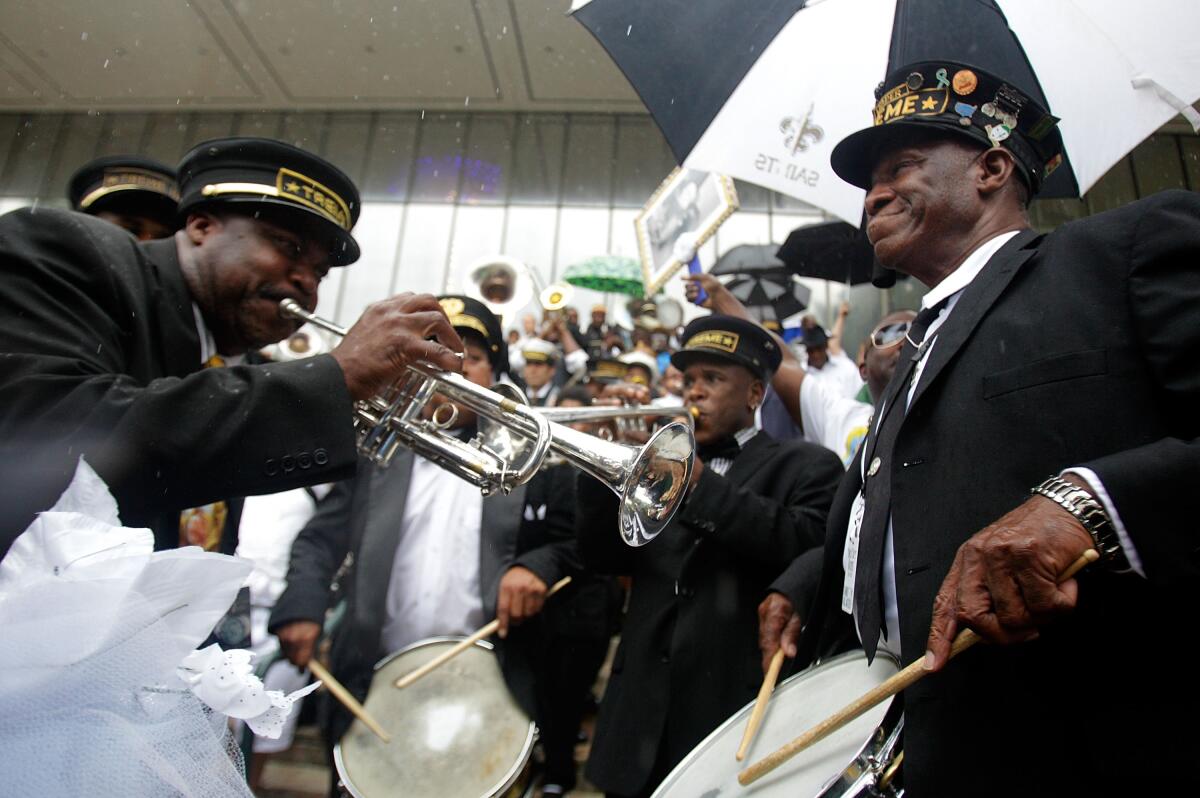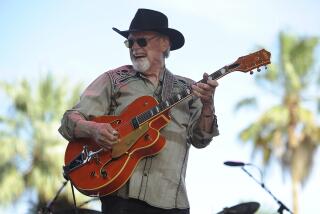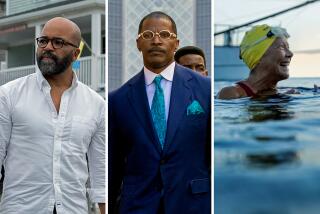Netflix’s ‘The Eddy’ remixed the jazz funeral. Here’s what it is and how they did it

The following story contains spoilers from the third episode of “The Eddy,” titled “Amira.”
The third episode of Netflix’s “The Eddy” zooms in on Amira (Leïla Bekhti), the wife of jazz club co-owner Farid (Tahar Rahim). After he’s mysteriously killed by a masked assailant just outside the club, Amira and their children attend a somber funeral ceremony organized by his in-laws.
“I think it was a beautiful way to remember him,” Amira is told. “Yeah,” she responds with an air of detachment.
But later, when she unlocks the front door of her humble home, she discovers dozens of Farid’s friends crammed inside. Equipped with instruments, they greet her with disorderly chords before playing a swinging piece of music, paired with unabashed singing and clapping, stomping and dancing.
This scene is a twist on the jazz funeral, a traditional New Orleans procession held to facilitate a final goodbye and help “cut the body loose.” After meticulous planning, a formally dressed brass band leads the second line — a parade of people who may or may not know the deceased person directly — in a vibrant celebration of the life that was lived.
Though the second line has been decoupled from the jazz funeral — it’s been used to mark everything from weddings and bachelorette parties to film festival galas — the latter, in its traditional iteration, is still reserved for New Orleans notables, particularly musicians. (Of course, both traditions have been put on hold to curb the spread of the novel coronavirus.)
In Netflix’s ‘The Eddy,’ ‘La La Land’ director Damien Chazelle returns to the musical — this one starring Andre Holland and Amandla Stenberg.
The jazz funeral is a celebratory custom deeply rooted in African and African American history. It typically takes place in the streets of New Orleans, passing through spots like the neighborhood of Tremé, known as the birthplace of jazz, and Congo Square, where enslaved people publicly gathered to play traditional African drums on Sundays.
“Some jazz funerals I’ve attended have hundreds of people waiting outside a church for the body to come outside,” said Richard Brent Turner, professor of African American Religious History at the University of Iowa and author of “Jazz Religion, the Second Line, and Black New Orleans After Hurricane Katrina.”
“There can be thousands of people in these processions, and the dancing could take four hours to complete. They’re doing the calinda and the bamboula — intricate, African-derived dances reinterpreted by enslaved people — and they’re doing it at a frenetic pace while chanting in Creole. Since New Orleans has a tropical climate with lots of heat and humidity, people often stop into a corner store or a barroom to hydrate along the way.”
“I grew up near New Orleans, and I’ve seen so many funeral processions that are among the most moving things I’ve ever seen,” said Glen Ballard, who wrote “The Eddy’s” music with Randy Kerber. “Jazz was born in New Orleans, but it’s international now. We wanted to see what a second line could look like in this small house outside Paris.”
James Marsden and “Dead to Me” creator Liz Feldman explain how they kept him around in Season 2 — after offing his character in the Season 1 finale.

Jazz funerals have been previously portrayed onscreen — in the movies “The Imitation of Life,” “Live and Let Die” and “Double Jeopardy,” plus TV shows like HBO’s “Treme,” the CW’s “The Originals” and FX’s “American Horror Story: Coven” — with varying degrees of accuracy. Though the spontaneous procession in Netflix’s limited series is restricted to Amira’s cozy home, the portrayal nails the emotional beats of the sacred ritual.
“The musicians who lead jazz funerals aren’t just playing fun music, they’re doing spiritual work,” Brent explained. “It can start out energetic and happy — they play such joyous music that people start doing somersaults in the air and dancing on rooftops and railings of freeway overpasses. Then they’ll magically shift the mood to one of deep sadness and mourning. It’s almost like they’ve done something to you, and you follow them hypnotically.”
That’s exactly what happens in “The Eddy.” After a jubilant kickoff led by wind instrumentalists, Amira finds herself entranced by the beats of North African drums and performs an uninhibited dance. The cathartic sequence is followed by spoken testimonials (including by Amira and Farid’s business partner Elliot, played by André Holland). The band also plays two full songs with tears in their eyes.
“I wanted to show that death can be a celebration — first, we cry at the cemetery, and then we release all of these emotions at home,” said Houda Benyamina of directing the episode, which was partly choreographed and partly improvised.
“The whole thing was composed like a jazz song — there’s a beginning, a main theme, and then, no rules,” she continued. “Leila’s trance was not planned or rehearsed, it was totally improvised as people were just [expressing] their emotions in the most primal way.”

This jazz funeral translates in “The Eddy” because, like all the other musical moments in the series, the songs are presented with minimal interruption: A handheld camera wanders through the space, with just a few cuts and very little dialogue. Between sections, the action shifts to the series’ main story line, only to return to the poignant scene and linger, as if the viewer were another attendee.
Creating this illusion required highly blocked rehearsals, in order to plan the camera’s movements amid the seemingly spontaneous performances. Since all of the show’s music is recorded live, microphones and cables were hidden among the dozens of actor-musicians, with additional recording equipment put up in a small room upstairs.
The intricate sequence was shot in a single day in June 2019, at the height of a record-breaking heatwave. “It was a very difficult shoot but we all felt we were doing something special,” said Ballard.
But the hardest part of pulling it off wasn’t the heat, according to Benyamina. “It was tough for the musicians because I wasn’t looking for perfection,” she said. “On the contrary, I wanted to capture all the genuine emotions over the technical components. They had to accept being imperfect, not precise, and not on cue.
“Sometimes, you have to forget technique, go beyond your comfort zone and leave room for everything else,” she added. “That’s what jazz is all about.”
More to Read
The complete guide to home viewing
Get Screen Gab for everything about the TV shows and streaming movies everyone’s talking about.
You may occasionally receive promotional content from the Los Angeles Times.







